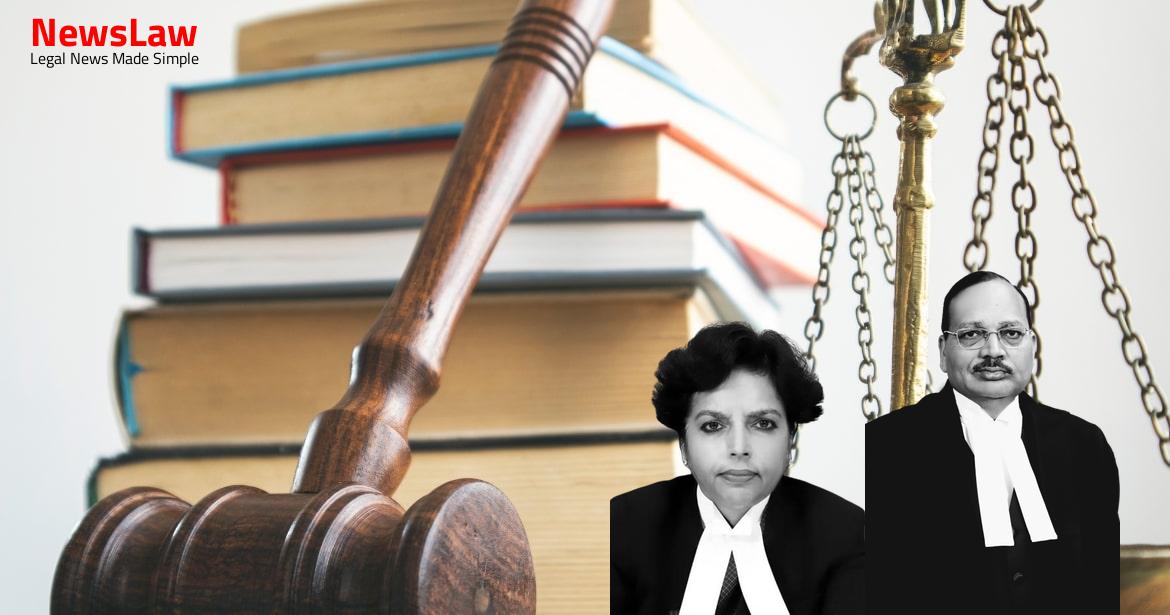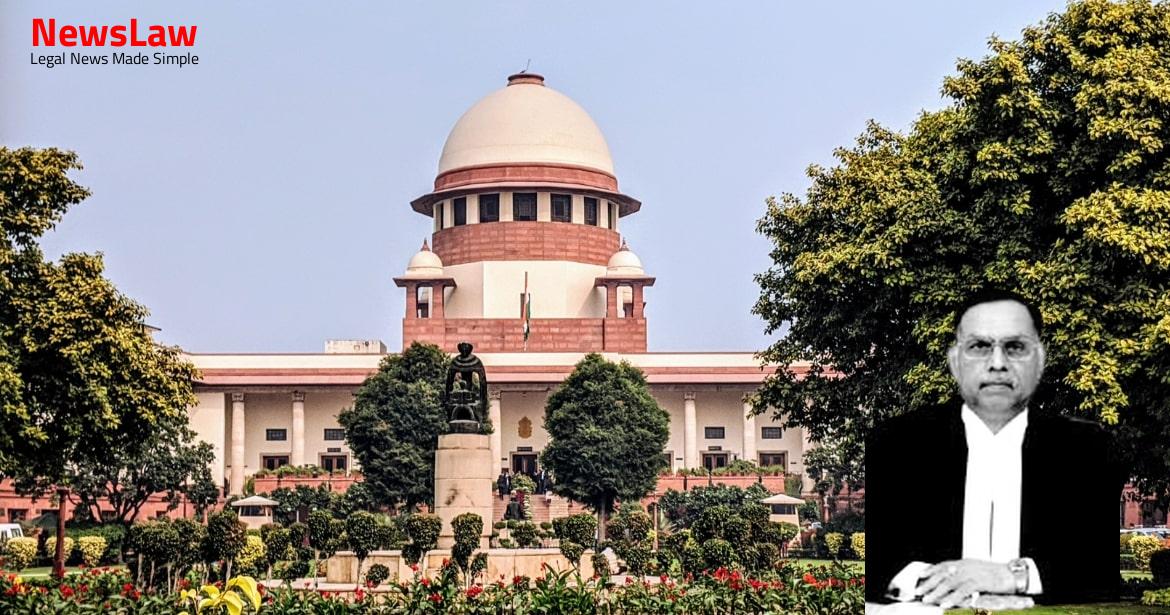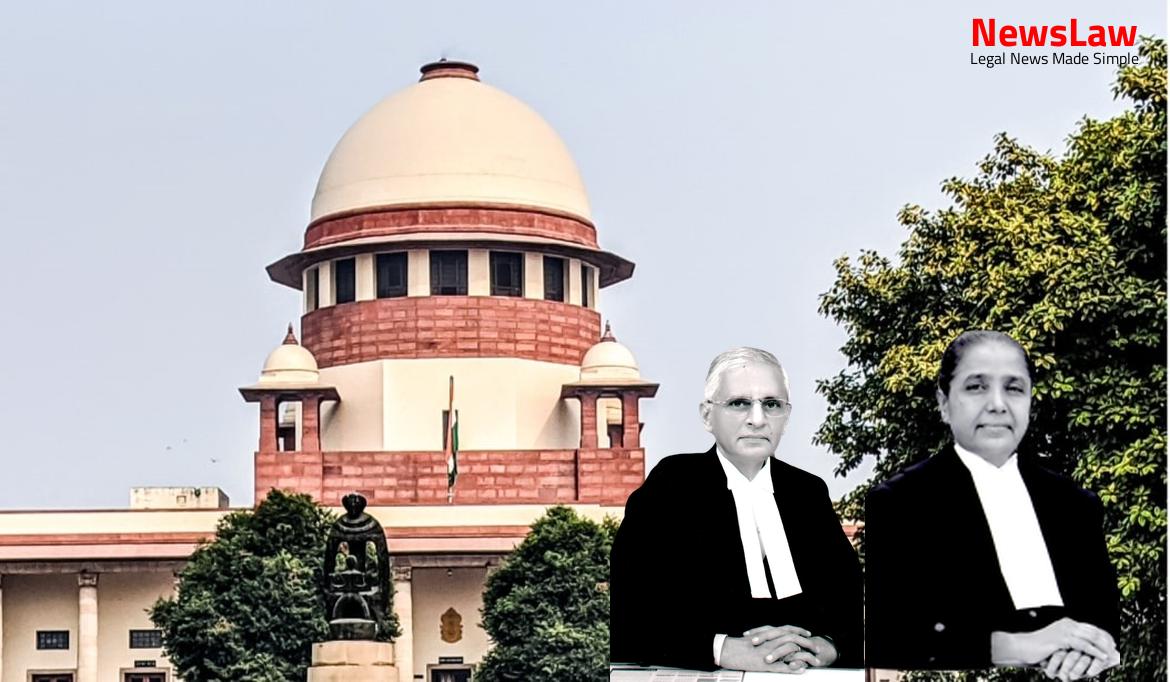The legal analysis in this case delves into the importance of establishing guilt beyond reasonable doubt, especially when faced with slippery witnesses and lack of corroborative evidence. The court’s scrutiny of the recovery process and witness testimonies highlights the principle of benefiting the doubt for the accused. This summary serves as a valuable resource for understanding the complexities involved in criminal cases and the burden of proof on the prosecution to ensure a fair trial.
Facts
- The Trial Court convicted the Appellant and Manjeet under Sections 392 & 397 IPC.
- All the Accused were sentenced to a maximum of 10 years of rigorous imprisonment under Section 397 IPC and/or Section 120B IPC.
- Manjeet was also convicted under Section 25 of the Indian Arms Act, 1959.
- The Accused contended that they could not be convicted solely based on disclosure statements and lack of witness support.
- The High Court re-appraised the evidence and upheld the Trial Court’s findings, reducing the sentence to 7 years rigorous imprisonment under Section 397 IPC with a fine of Rs.10,000/-.
- Despite lack of identification in Court, the High Court emphasized other evidence pointing to the commission of the crime.
- H.C. Karmbir Singh supported the Prosecution’s version and testified about the recovery of incriminating articles in his presence.
- Appellant denied the recovery of incriminating evidence in his 313 Cr.P.C. statement.
- The Court admitted an accused’s statement leading to the discovery of a fact as evidence against them, noting the lack of explanation on how the articles came into the possession of the Accused.
- The High Court maintained the conviction of the Accused persons and upheld the sentences for Sections 392 and 397 IPC, but reduced the sentence under Section 397 IPC to meet the ends of justice.
- The Appellant stated that Rs. 10,000/- fell in his share, out of which he had already spent Rs. 5,000/-.
- The police were led to the Appellant’s residence where Rs. 5,000/- were recovered along with a red cloth and a passbook.
- The ‘red cloth’ was alleged to belong to the wife of the Complainant with the name ‘Kamla’ embroidered on it, and the passbook belonged to the Complainant.
- The Prosecution version narrated an incident where the Complainant was robbed of Rs. 46,000/- by the Accused, with the Appellant’s involvement in the robbery.
- The nephew of the Complainant debunked the occurrence and stated that no amount was snatched from his uncle.
- Co-accused were involved in a conspiracy to loot the Complainant, with the Appellant, Manjeet, and Vinod executing the robbery.
- 14 witnesses were examined by the Prosecution in the trial.
- The Appellant denied the allegations during the trial and led to the recovery of a country-made pistol.
- Witnesses supporting the Prosecution’s narrative confirmed the involvement of the Accused.
- An FIR was lodged based on the Complainant’s report to ASI Rajinder Kumar, leading to the arrest of four accused persons.
- Several Prosecution witnesses turned hostile during the trial.
Also Read: Analysis of Suppression of Information in Employment Selection: Legal Perspective
Arguments
- Appellant’s principal contention is that his conviction is solely based on the ‘disclosure statement’.
- Appellant argues that there is no other cogent evidence to support his conviction under Sections 392 and 397 IPC.
- Complainant and his nephew, the only eye-witnesses, did not support the case of the Prosecution.
- No mention of the Appellant or his co-accused in the execution of the offence by the Complainant (PW-4).
- No attempt to lead T.I.P. in the investigation by ASI Rajinder Kumar (PW-14).
- Co-accused Mukesh and Suresh acquitted in separate cases due to lack of evidence.
- Limited scope of interference by the Court in cases of concurrent findings of fact.
- Conviction of the Appellant based on disclosure statement leading to recovery of evidence.
- Acquittal of co-accused does not impact Appellant’s conviction as he is alleged to have carried out the malfeasance.
Also Read: Analysis of Cheating and Forgery in Passport Case
Analysis
- The recovery of alleged items took place almost a month after the offense, raising doubts on the credibility of the recovery.
- The recovered items were common objects easily accessible in the market, weakening the prosecution’s case against the accused.
- The lack of compelling evidence to support the alleged threats and the principle of benefiting the doubt for the accused even with strong suspicions were highlighted.
- The Trial Court and High Court seemed to have erred in drawing adverse inferences against the appellant despite insufficient proof of guilt.
- The burden of proof to establish guilt beyond doubt lies with the prosecution, especially in cases with slippery witnesses, which was not adequately fulfilled in this case.
- The reliance on the disclosure statement and recovery memo without corroborative evidence raised serious doubts on the validity of the conviction.
- The failure of the prosecution to thoroughly investigate and present credible evidence that directly linked the accused to the crime was emphasized.
- Factors such as the interval between the offense and recovery, availability of recovered items in the market, and the nature of the objects play a crucial role in determining evidentiary value and credibility.
- The significance of the testimony and trustworthiness of witnesses, such as the lack of effort by the police to conduct a thorough search and reliance on a single companion of the complainant as the independent witness, was underscored.
- The contradictions in witness testimonies regarding the recovery memo added to the doubts surrounding the credibility of the evidence presented.
- When the prosecution fails to inspire confidence in the recovery with regard to its nexus to the alleged offence, the benefit of doubt should be given to the accused.
- The court should uphold the principle that it is better for ten guilty persons to escape than for one innocent person to suffer.
- This principle has been a cardinal rule in criminal jurisprudence for almost three centuries.
- The evidence on record does not establish the guilt of the Appellant beyond reasonable doubt.
- Courts below arrived at recording the guilt of the Appellant without any cogent rationale.
- The affidavit presented by the Complainant during the T.I.P. pertained solely to Manjeet and did not name the Appellant.
Also Read: Discrepancy in Date of Birth: Court’s Legal Analysis
Decision
- The judgments and orders passed by the Trial Court and High Court are set aside.
- The Appellant is acquitted of all charges.
- As a result, the criminal appeal is allowed.
Case Title: BIJENDER @ MANDAR Vs. STATE OF HARYANA (2021 INSC 706)
Case Number: Crl.A. No.-002438-002438 / 2010



